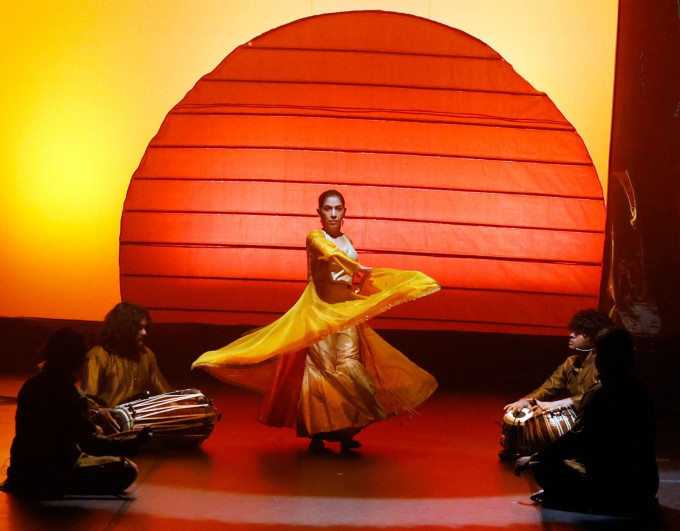Kathak legend Aditi Mangaldas on Indian film industry’s representation of the dance form: ‘Cinema appropriates from the medium, stage, costumes’
In ancient India, masterful storytellers referred to as “kathakars” narrated mythological stories and tales of love––”katha”––through dance; their graceful steps, expressive mudras, intricate footwork known as “Tatkar,” impressive spins, and brilliant acting aiding them in entertaining the audiences. From the two words, “kathakars” and “katha,” the dance form derived its name –– Kathak. Then, it was predominantly performed by men.
In the Mughal era, Kathak transformed. Persian and central Asian cultures influenced it. Women began performing Kathak, and it gained prominence with tawaifs (courtesans) adding a pinch of sensuality to it. In its modern form, Kathak performers explore contemporary themes and narratives, making it more relevant than ever.

Aditi Mangaldas, one of the most celebrated names in Kathak in the country, is one such legend. Ahead of her performance titled Lost…in the Forest at the NCPA’s Jamshed Bhabha Theatre, indianexpress.com caught up with Mangaldas to talk about her journey, some of her favourite pieces to perform, her take on the Indian film industry’s representation of Kathak, and more.
How the Kathak journey began
Mangaldas’s earliest recollection of Kathak dates back to when she was just five years old.
“I would share my joys and apprehension as a kid through movement. My parents realised I had an artistic gene and they tried to put me in different classes, and eventually I realised dance was my calling,” Mangaldas said.
Learning from legends like Kumudini Lakhia and Pt. Birju Maharaj was “magical” for her. However, Mangaldas abides by this one saying –– “dance being your passion, life is your biggest guru.”
Specific rituals before a performance
Like all performers, Mangaldas, too, has a set of rituals ahead of her performances. “They are not religious, just a way to say thank you, to show gratitude towards everyone who helped me in my dance journey,” she said.
“When I warm up, I want there to be no sound. I like changing alone. There’s a certain way I proceed to wear the bells and costumes,” said Mangaldas, who was nominated for Outstanding Female Performance (Classical) at The Critics’ Circle National Dance Awards in 2017, and Outstanding Performance – Female by the National Awards UK in 2023.
 “On stage, I’m completely emptied out. My mind, heart and body have been completely hollowed out and are ready to receive,” she shared. (Source: NCPA)
“On stage, I’m completely emptied out. My mind, heart and body have been completely hollowed out and are ready to receive,” she shared. (Source: NCPA)
Thoughts on popularisation of Kathak because of Bollywood and pop culture, and if the shows do a decent job of representing the authentic dance form
“Stage performance of Kathak is very different than how it is represented in cinema. The Indian film industry is a popular genre, and cinema appropriates from the medium, stage, costumes,” Mangaldas said.
On her issue with Heeramandi
“The tawaifs were indeed great artists, but where was the exploration of art itself? The riyaaz, the exchange of dialogue and music, movement, literature, and poetry? The sequences were beautiful, but they can’t match up to the performances of dancers who have devoted decades to mastering the dance form,” Mangaldas said.
Favourite performances
Mangaldas spoke about how, as an artist, she often feels “pregnant with production,” and after the gestation period, it is difficult to choose a favourite piece.
“Of course, there are some timeless and archival pieces –– ones I performed in 1995 and again a couple of years ago. I performed the Female Sexual Desire lately, and have performed extracts from my classical solo Immersed,” she said.
Thoughts on future of Kathak in India
According to Mangaldas, artists have a great responsibility to reflect what’s happening in the world. “The challenge lies in how to connect and convert those who are new to the dance form. Thus, there’s a huge responsibility on artists to be a part of spaces that exist out of the bubble of social media platforms like Instagram. Spaces like NCPA, G5A allow creative freedom to artists to share their art, a great tradition that they have inherited,” she said.
Mangaldas spoke about the need for funding, from both corporates and governments, along with opening up more venues and having more responsible artists to speak up.
“It is important to carry the ‘now’ in your dance, and you can do so by dancing with complete passion and abandon, with respect for history and geography of the dance form. Being inclusive, open-minded and diverse in one’s thinking and allowing multiple entry points is key to encouraging the youth to embrace Kathak in the future,” she said.
📣 For more lifestyle news, click here to join our WhatsApp Channel and also follow us on Instagram
Disclaimer: The copyright of this article belongs to the original author. Reposting this article is solely for the purpose of information dissemination and does not constitute any investment advice. If there is any infringement, please contact us immediately. We will make corrections or deletions as necessary. Thank you.
